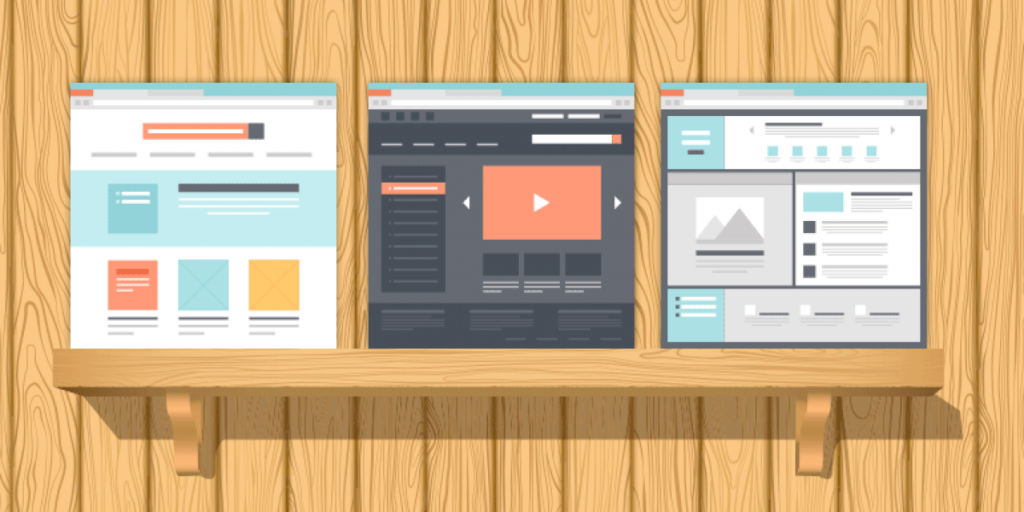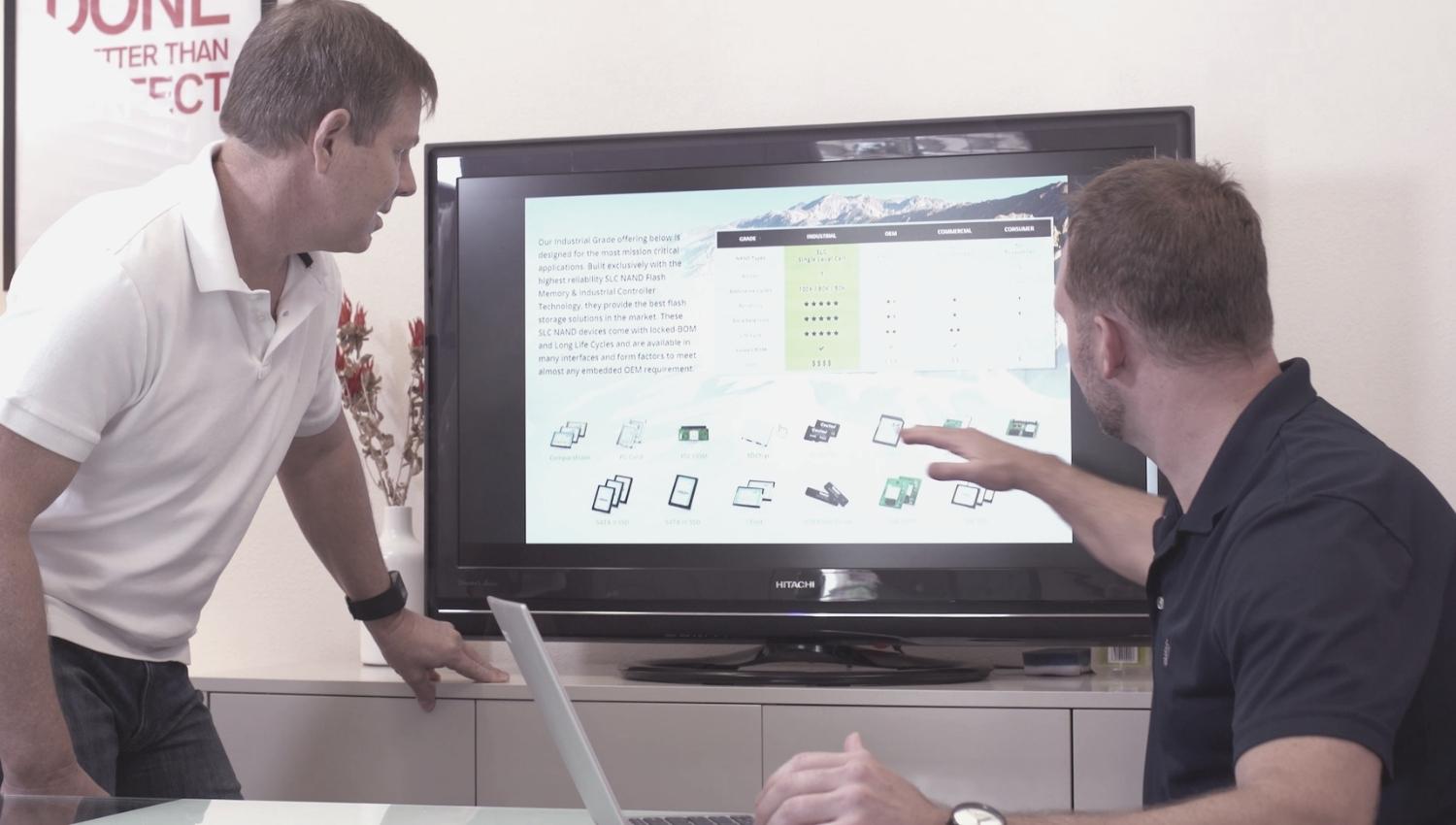
The Impact of Bad, Poor Visual Design on a Website
Updated last on:
May 22, 2023
People make snap assumptions (good or bad) of your website within 50 milliseconds, and its visual design could lead to a bad first impression. Here's the negative impact poor visual design has on a website.

by Eric Sharp
TOPICS:
First impressions
We all know first impressions matter.
It’s the reason why we pick out our best outfit for a job interview or put a little more effort into that first date. As soon as we walk through the door our clothes, smile, and handshake are all being critiqued.
The same can be said for your website, and its visual design can be the reason for the immediate positive or negative impression on your visitors.
If your company doesn’t grasp the basic elements of visual design (e.g. shapes, colors, typography) and then correctly apply the principles (e.g. unity, balance, contrast) — your website will instantly kill user engagement and turn them away faster than they can blink.
How long does your website have?
So how long does your website have to form a good first impression? 30 seconds? 5 seconds?
Try .05 seconds (or your last eye blink)
Studies show that people will make snap assumptions (good or bad) of your website within 50 milliseconds of it loading. Talk about judging a book by its cover.
The impact — a sobering reality
After those 50 milliseconds, your website’s visual design will have formed a:
- Good impression and visitors will stay — leading to deeper engagement, pageviews & conversions
- Bad impression and visitors will leave — possibly hightailing over to your competition
A bad first impression = not trustworthy, not credible
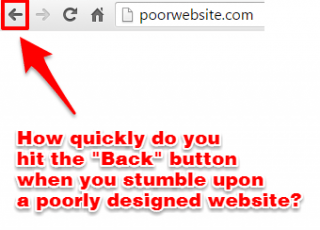
I’m sure you’ve had the experience of visiting a website for the very first time, it loads, and then — you immediately hit the “Back” button (or keyboard shortcut “Backspace” or “Delete”, depending on your OS).
I know that sequence has played out thousands of times for me over the years.
What was it about that website that discouraged you? Assuming the site was relative to what you were looking for, your quick abandonment was probably related to its visual design. Those aesthetics sent you an amateurish message, and you quickly determined its credibility (regardless of its validity).
Studies show that poor visual design will create a bad impression because it quickly triggers a feeling of untrustworthiness. Once you sabotage a first-time visitor’s trust, there’s a high chance you’ve lost them — forever.
What is visual design?
Usability.gov contains valuable content around the basics of visual design and defines it well:
“Visual Design focuses on the aesthetics of a site and its related materials by strategically implementing images, colors, fonts, and other elements. A successful visual design does not take away from the content on the page or function. Instead, it enhances it by engaging users and helping to build trust and interest in the brand.”
To convince visitors that your company and services/products are trustworthy and credible, your website must understand visual design’s basic elements:
- lines
- shapes
- color palette
- texture
- typography
- form
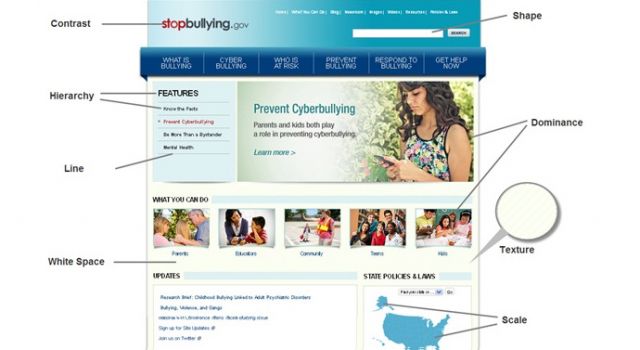
It then must apply the principles properly throughout the entire website:
- unity
- gestalt
- space
- hierarchy
- balance
- contrast
- scale
- dominance
- similarity
If a website has a pleasant visual design, users are more relaxed, tend to find the website more credible and easier to use.UX Myths Myth #25
Signs your website’s visual design is turning people away
- logo: difficult to locate, overly optimized, doesn’t have ample spacing in the header
- fonts: too similar, too many, not paired well or readable (bad typography will crush unity & balance)
- imagery: generic, no styling consistency, slow load time (be careful with overusing stock photography)
- colors: not harmonious or used well to establish necessary contrast
- navigation menu: no separation or proper hierarchy from content, search options, and call-to-actions
- overall layout: simply doesn’t feel connected (more about the gestalt principle)
It’s not optional, it’s an obligation
If you haven’t come to the conclusion that a professional visual design is simply part of the equation to building a successful website, I apologize for not being more convincing. However, studies prove it matters.
Don’t fall victim to the notion that visual design is just “prettying up” your site — that’s dangerous thinking (and also provokes me mildly, which can be fun to witness in person).
50 milliseconds is all you have. Don’t let a poor visual design turn away your visitors. It’s the price of admission to simply, and swiftly, convince them that your organization is credible and can be trusted to hang around further and see what your website has to offer.
Need website help?

We're all about websites — especially websites that are loved by people and Google.
Since 2001, we've been helping clients nationwide turnaround their outdated and under-performing websites.

"Our website is generating quality leads every week thanks to their website consulting."
Steve L.
Cactus Technologies
Hey, you made it!
There is gobs of information available today — I'm honored you found this article interesting enough to make it here. I hope this insight leads you to a better-performing website!
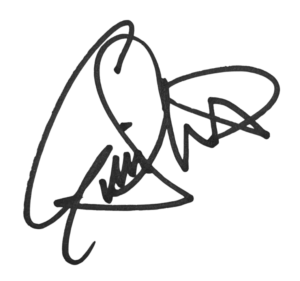

About the Author
Eric Sharp is the founder of ProtoFuse and has been in the website trenches since 1999 — right before the dot-com boom redefined the website landscape. Since then, he's accumulated 25 years of digital marketing experience and prides himself on creating websites "Loved by people and Google". Outside of websites, it's all about fam time with his wife and 3 kids. He enjoys CrossFit, cooking steak on his cast iron skillet, collecting Jordan sports cards, and Daaa Bears.



